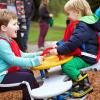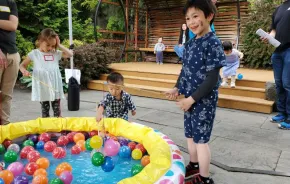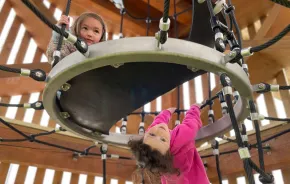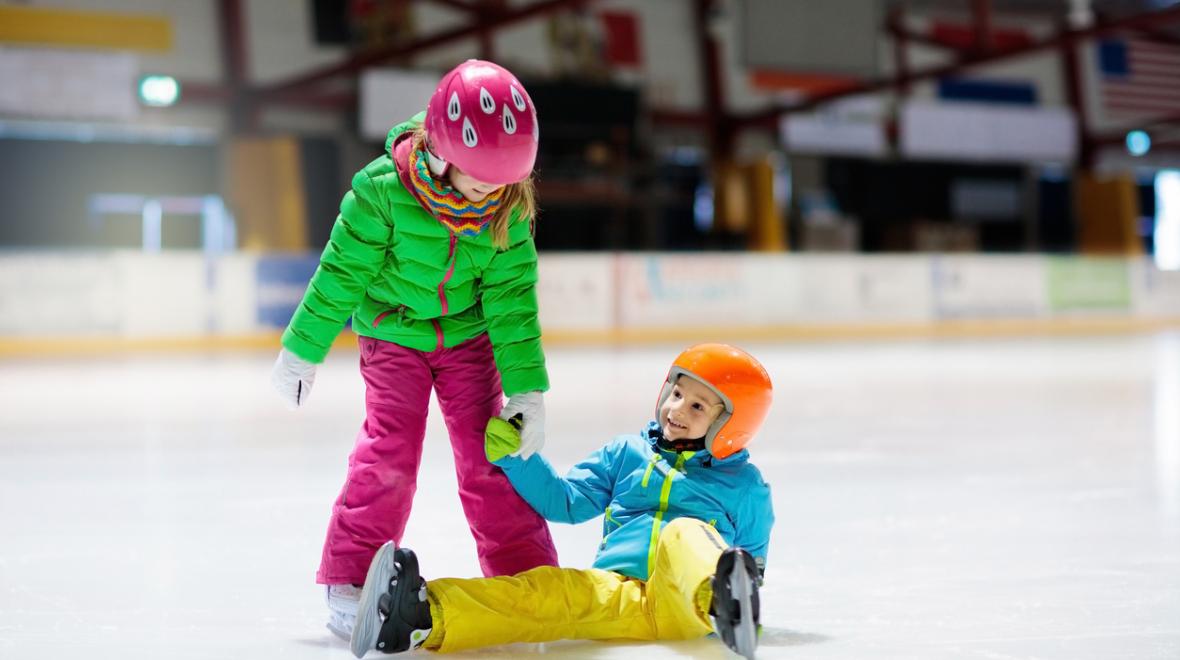
Going for a spin at a local ice rink is a quintessential winter activity. And during the holiday season, you can choose from not just one of the classic indoor skating rinks around the region but also festive seasonal rinks in Bellevue, Olympia and Everett. Cue the steaming mugs of hot cocoa.
There’s only one problem: Ice skating isn’t the easiest sport to pick up. At any local public skate session, you’ll see kids big and small hanging on to their parents for dear life — while the parents are wondering how soon they can schedule a trip to the chiropractor.
So what’s your strategy for helping kids learn to ice skate without breaking your back? We asked local experts and here are their tips.
Dress for success
Success on the ice starts before you leave the house. Make sure kids are wearing tall, lightweight socks, and layers of lightweight, warm clothes. But don’t layer the socks. “Parents think that two pairs of thick socks are helpful but it cuts off circulation,” said Patti Brinkley of Lynnwood Ice Center.
Also: Don’t wear jeans because they restrict movement. Choices like sweatpants or leggings are better.
Get the right fit
Terry Green, whose family owned Shoreline’s now-closed Highland Ice Arena for 60 years, said this about fit: “Skates need to fit snug like a ski boot and not loose like a tennis shoe. If your foot moves inside the skate, you can’t balance on the blade.” Rental ice skates are usually available for children as young as age 3.
Learn the basics off the rink
Once kids are laced up, they can practice basic ice skating skills before they get on the ice — a strategy that Lynnwood Ice Center instructors use with beginners. Step one is to march in small steps instead of walk. “It’s one of the best ways to learn to transfer their weight,” said Brinkley. “We talk to kids about being dinosaurs.”
Learn to fall
Before they’re on the ice, kids can also learn how to fall down and get up. “Try not to have them fall too far forward,” said Brinkley. “Urge them to try and fall slowly and collapse down without trying to flail.”
Kids will get frustrated, and that’s okay. You can tell kids that everybody falls, even professional skaters, and it’s part of the learning process.
Build to a glide
Kids should continue to march on the ice instead of walking, and eventually they will build to a glide. Skating instructors at Lynnwood Ice Center encourage kids to switch from loud feet (marching) to quiet feet (keeping them still, which facilitates a glide). “I relate it to kids learning to swim; I tell them your glide is like a float,” said Brinkley.
Be safe
All ice skating instructors agree: Don’t ever carry your child on the ice. Also never walk on the ice in street shoes, thinking you can provide support to your child without your own skates on (pro tip: you can’t). And although ice skating rinks don’t always require it, it’s a good idea for kids to wear helmets to protect their noggins. A regular bicycle helmet works just fine.
Consider a class
Many Puget Sound-area ice rinks offer ice skating group lessons for kids ages 3 and older. Check for starter lessons or multi-week series lessons.
Don’t push it
Some children will be ready to start ice skating as soon as they are big enough to fit in the boots, but others may have better luck waiting until they’re school-age. Be patient, have fun and remember the power of that cup of hot cocoa!
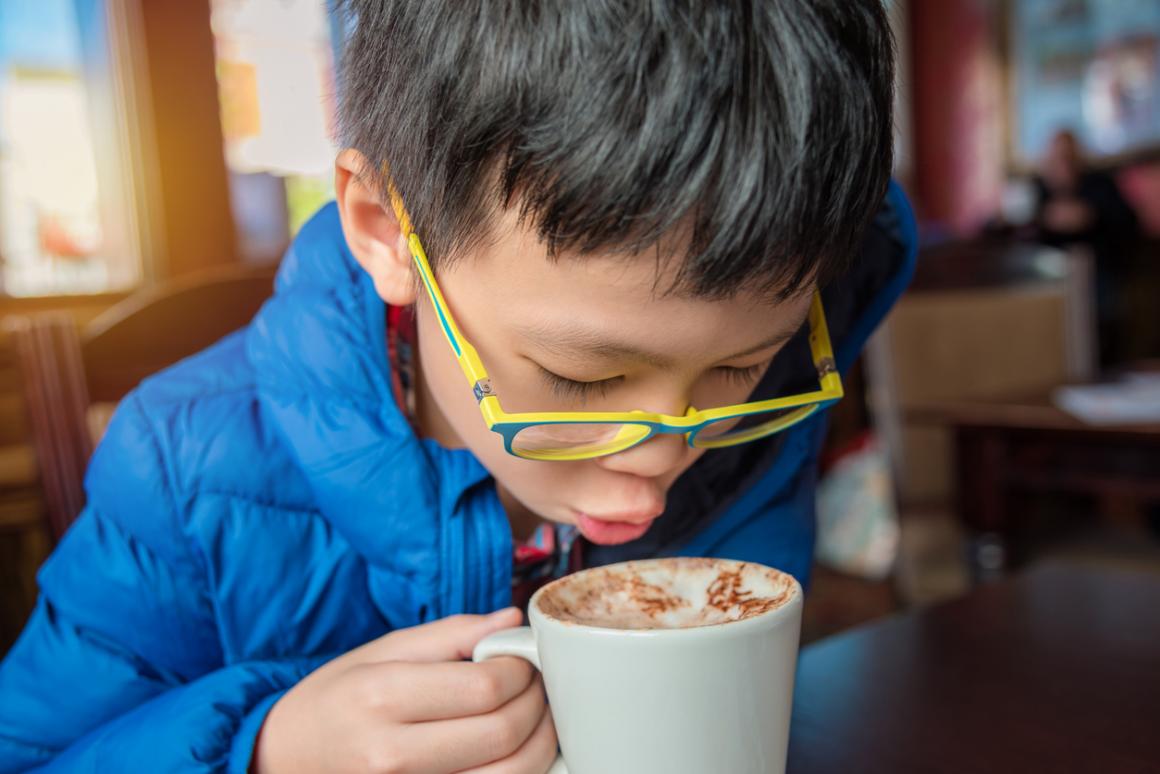
Editor’s note: This article was first published many years ago and updated most recently for 2023.







